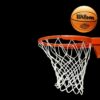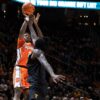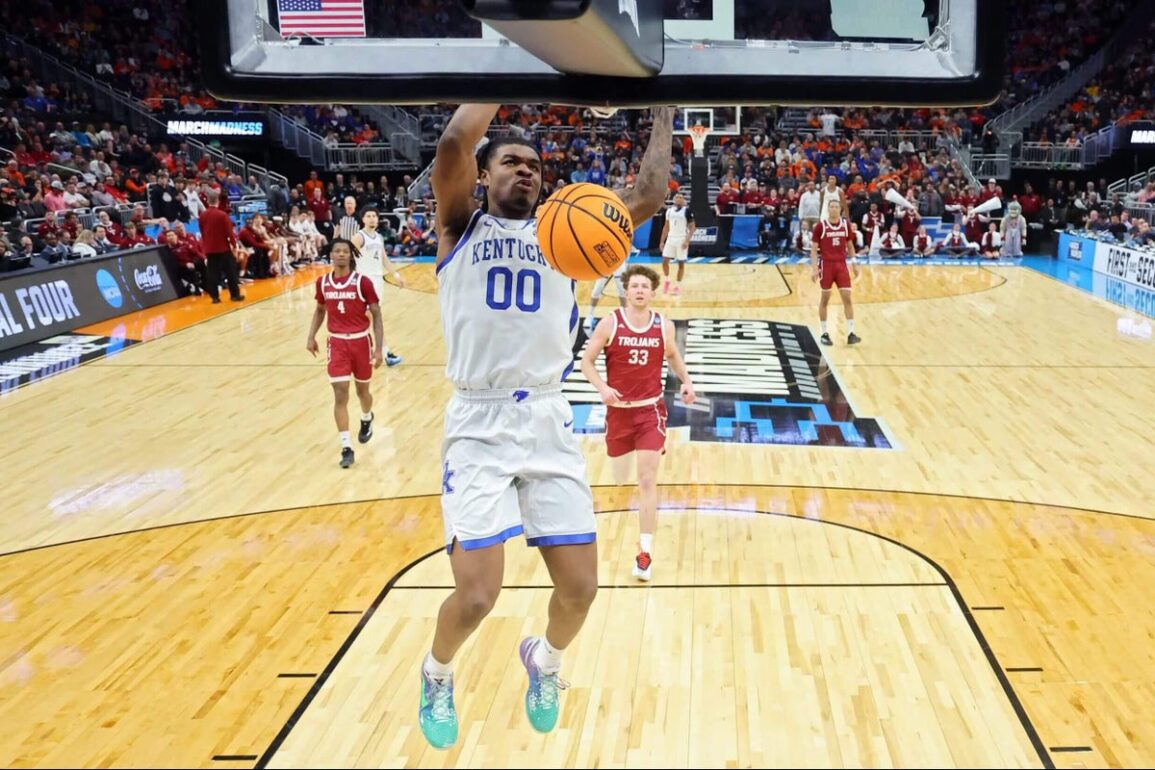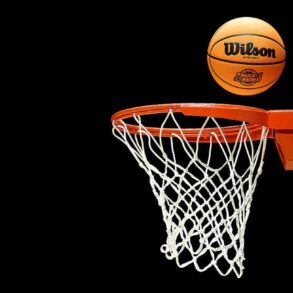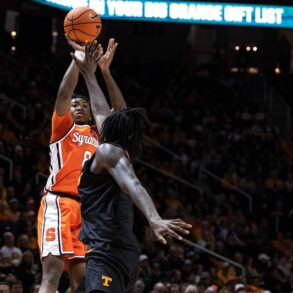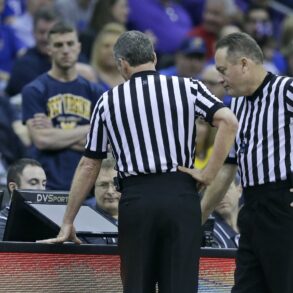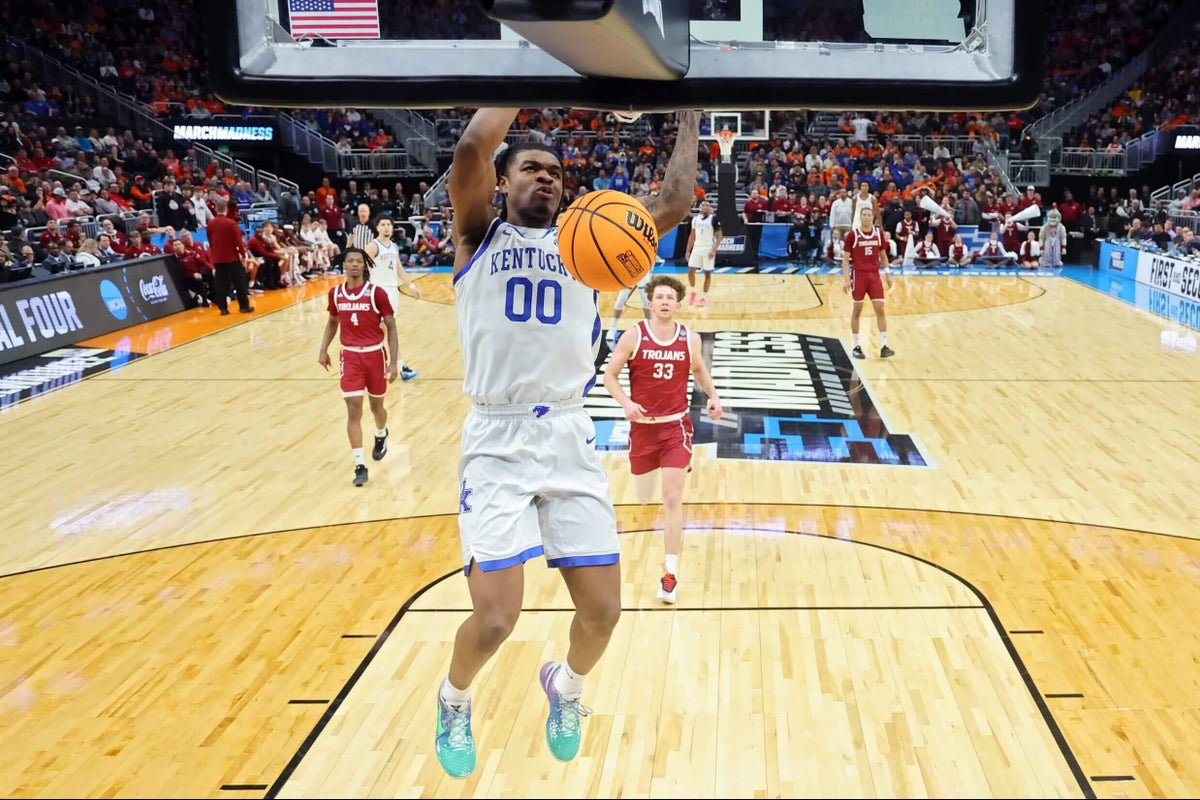
The deadline to enter the transfer portal has long passed. And while players who declared for the NBA Draft still have a few weeks to finalize their stay-or-go decisions, we know much more about what next season will look like than we did a month ago.
Thus, you all have questions. We (try to) have answers. Thanks to everyone who submitted for our first offseason two-part national college basketball mailbag. Away we go.
Note: Submitted questions have been lightly edited for length and clarity.
Advertisement
What should the realistic expectations for the SEC be next year considering the historic year it had this past season? And because I’m a fan of Kentucky, how do you expect the Cats specifically to fare? — Ashley H.
Just as a reminder, the SEC this season:
• Set the single-season NCAA Tournament bids record by one conference (14 teams);
• Set the single-season Sweet 16 record for teams from one conference (seven);
• Sent two teams to the Final Four, the first time a league did so since the ACC in 2022 (with Duke and North Carolina);
• Produced its first national champion (Florida) since Kentucky in 2012;
• And finished with the highest overall KenPom rating of any conference in the site’s 29-season database.
So, yes, historic in every sense.
Put together, that’s more than enough evidence for my #take: That last season’s SEC was a one-of-one anomaly, the likes of which we might never see again in college hoops. (Let’s also not forget the league is losing three first-team All-Americans: Johni Broome, Walter Clayton Jr. and Mark Sears. Not nothing!) That said, because of the SEC’s now decade-long investment in basketball, plus its financial standing as one of the de facto “Power 2” conferences, Greg Sankey’s conference isn’t going anywhere. The Athletic’s way-too-early top 25 featured seven SEC teams — more than any other league — and despite plenty of roster upheaval the last month, most of those contenders still hold firm. Now, would I take the top of the SEC over the top of the Big 12? Or over St. John’s and UConn in the Big East? No. But the overall depth in the SEC should be stronger than in either of the two leagues, and possibly the best in the country.
As for Kentucky specifically? Hoo, boy. The Cats are loaded. You could make the case they’ve been the biggest winners in the transfer portal to date. Start with the backcourt, which is absolutely stacked between Jaland Lowe (Pittsburgh), Denzel Aberdeen (Florida) and incoming five-star guard Jasper Johnson — and that’s without mentioning the likely return of leading scorer Otega Oweh, who should be a preseason All-American if he’s back in Lexington. Including those four and Kam Williams (Tulane), Mark Pope’s team has “best perimeter in America” potential. Now, I’m a little less sold on the frontcourt, mostly because knee injuries are scary and we don’t know when exactly Jayden Quaintance (Arizona State) will be back from the torn ACL he suffered in February. But if he’s healthy sooner rather than later, he, Mouhamed Dioubate (Alabama) and returner Brandon Garrison make for a stout frontline. Pope won his first NCAA Tournament games as head coach this season — but with this group, he has the runway to make his first Final Four. — Brendan Marks
Advertisement
I’m very curious about how coaches bring a completely new bunch of guys together into a true team. Buzz Williams is trying to do it at my alma mater, Maryland. Scott Drew has to do it at Baylor (and had a hard time with it this past year). Mark Byington did amazing things with a whole new crew last year at Vandy. Any tips on best practices for uniting a band of newbies? — Anonymous
Roster construction was a big topic throughout the 2025 NCAA Tournament. Coaches everywhere have come around to the fact that if you want to win, you have to play the portal game. But it’s risky, because you’re usually recruiting on a much tighter timeline. Chemistry is the biggest issue — is this player going to fit in with the players already in the locker room?
During the West Regional in San Francisco, I asked Florida coach Todd Golden how much say players get. He said it’s his staff’s job to figure out how a transfer will fit from a basketball perspective. But when it comes to team camaraderie, he leans heavily on his players’ gut reactions.
“If it’s guys who have a lot of equity in our program, we’re definitely listening to what they have to say. … When we brought in Alijah (Martin) last year to visit, Walt (Clayton Jr.) and Will (Richard), they had a big say in regards to whether he was the right fit,” Golden said. “Obviously we’re going to have the final say as a staff. If we feel there’s not going to be a good synergy between the newcomers and the guys in our locker room, it’s going to be really hard to make it work. And we’re generally going to pass on those guys.”
Complicating this, Golden pointed out, is that the NBA Draft deadline and the portal windows don’t exactly line up, so sometimes you don’t know until very late if some of your best players are staying or going. This is exacerbated by a deep postseason run, when staffs need to focus on their next opponent, not who’s in the portal.
There’s a school of thought that having some NBA coaching experience can help, too. In the pros, coaches are used to essentially “starting over” much more often than college coaches, who have long counted on players staying three to four years. — Lindsay Schnell
Advertisement
In a post-House world, should the Big East become the undisputed top basketball conference simply because it doesn’t have to split revenue share with a football team and those schools can earmark all $20 million in revenue-share funds to their men’s and women’s basketball teams? — Glenn H.
In a world where schools don’t have to fundraise and can magically summon that $20 million, absolutely! Alas, that isn’t the case. While most high-major schools will somehow “find” the money to pay players the full amount — even by, in some cases, “borrowing” from non-athletics university funds — it’s a lot easier for some schools to rummage up that coin than others. St. John’s and DePaul are in the same league, for instance … but one of these things is clearly not like the other. But your thinking still largely holds, Glenn, and the Big East — as well as other non-football playing leagues, like the Atlantic 10 — absolutely have a leg up on their counterparts this summer, assuming they raise the full $20 million.
Frankly, this idea is something coaches have been nervous about ever since the terms of the House v. NCAA settlement were first proposed. Take this season’s Final Four teams, for instance. Duke, obviously, is going to give more than a fair share of that $20 million to its men’s and women’s basketball teams — but that’s the rare high-major where hoops is still prioritized over football. Houston is too, to a lesser extent, and Kelvin Sampson’s program has never needed the most money to be successful. But Auburn and Florida? Please. Even coming off Final Four runs, both Bruce Pearl and Todd Golden will be fighting uphill for every penny they can redirect from their football counterparts (which went a combined 13-12 last season, by the way). Of course, how much a program pays doesn’t directly correlate to postseason success — ask Indiana, one of the most expensive rosters in the sport last season — but you’d rather spend your way to a fatter margin of error, if given the choice.
One last point I’ve heard in multiple conversations with coaches and general managers this spring: The Big East’s (and A-10’s) perceived advantage might not last long. Under the proposed terms of the House settlement, the annual amount schools can pay players will be roughly 22 percent of power conference athletic budgets. Well, guess what? With the SEC’s and Big Ten’s new TV contracts just kicking in, those leagues’ athletic spending is about to skyrocket — which is similarly going to inflate what schools are allowed to pay. (Example: 22 percent of $100 million, vs. 22 percent of $200 million, is very different.) It’ll take a few years before the SEC’s and Big Ten’s spending sprees really make life difficult for the non-football leagues to keep up, but it’ll happen eventually. — Marks
Welcome to the 217, David! 🔸🔹 pic.twitter.com/kSnaQggX0a
— Illinois Men’s Basketball (@IlliniMBB) May 5, 2025
How do you feel about the Illini? Do you feel they have a Final Four-caliber lineup? — Jeremy B.
I’m going to wait to see it before I go that far, but it’s promising. This is the furthest anyone has leaned into building a roster through international imports. UCLA’s 2023-24 team would be the next closest, but Mick Cronin ended up leaning way more on his American guys on that roster. Brad Underwood doesn’t really have that choice. This team is built for his international players to be the stars.
Mihailo Petrovic is the key. He’s 22 and an MVP candidate in the Adriatic League. One buddy familiar with that league told me his one concern is Petrovic is a burner and his speed is a real advantage in that league and might not be as much of one in the college game. But it’s a good league, and you have to be a real player to be an MVP candidate. To give you an idea of the level of competition, the leading scorer for the team above Petrovic’s in the standings (KK SC Derby) is Rasir Bolton, who averaged 10.1 points per game for Gonzaga in 2022-23 on a team that made the Elite Eight. Illinois’ Tomislav Ivisic played for Derby in 2023-24 and averaged 7.1 points per game in his final season. David Mirkovic, who was his teammate and was just signed by Illinois, is averaging 8.9 points this year. Ivisic just averaged 13.0 points, 7.7 rebounds and 2.3 assists in his first year at Illinois. These are real players who translate.
I’m interested to see what the frontcourt rotation looks like and if Underwood will try to play the Ivisic brothers together. Zvonimir Ivisic has shown flashes his first two seasons but has been inconsistent. Maybe playing alongside his brother will bring the best out of him, but it’s also possible he’s just the third big, and if that’s the case, that’s a nice luxury.
On the perimeter, returning Kylan Boswell and Ben Humrichous is a nice luxury. Jake Davis also has familiarity in the system. Cal transfer Andrej Stojakovic is a proven scorer who played on a crummy team, and he could benefit from the talent around him. The two freshman guards are wild cards and will be a bonus if Illinois gets anything from them. Keaton Wagler is one who I know well because he played high school ball at my alma mater. He could be a year away, but he was a nice steal and is the type of skilled guard with size Underwood likes.
Advertisement
This is a different approach to roster building, and a lot of coaches are going to be paying close attention to how it works out. I love the willingness to go for it and try something different. Cannot wait to see how it all comes together. — CJ Moore
(Photo of Kentucky’s Otega Oweh: Stacy Revere / Getty Images)
This post was originally published on this site be sure to check out more of their content.


